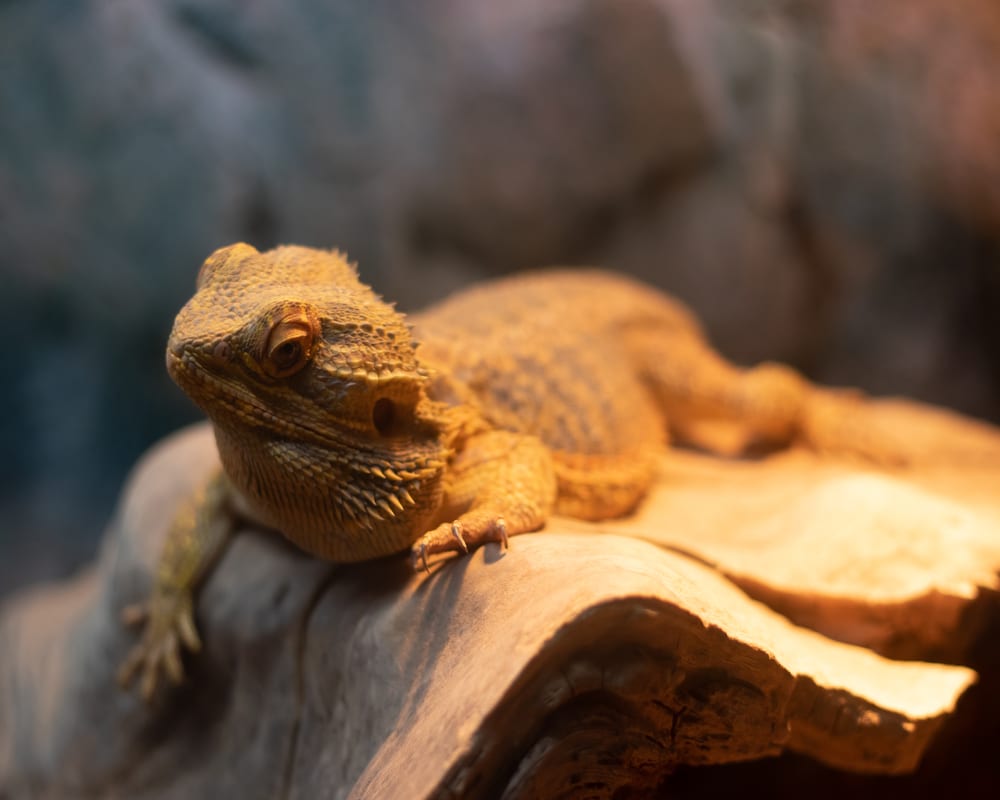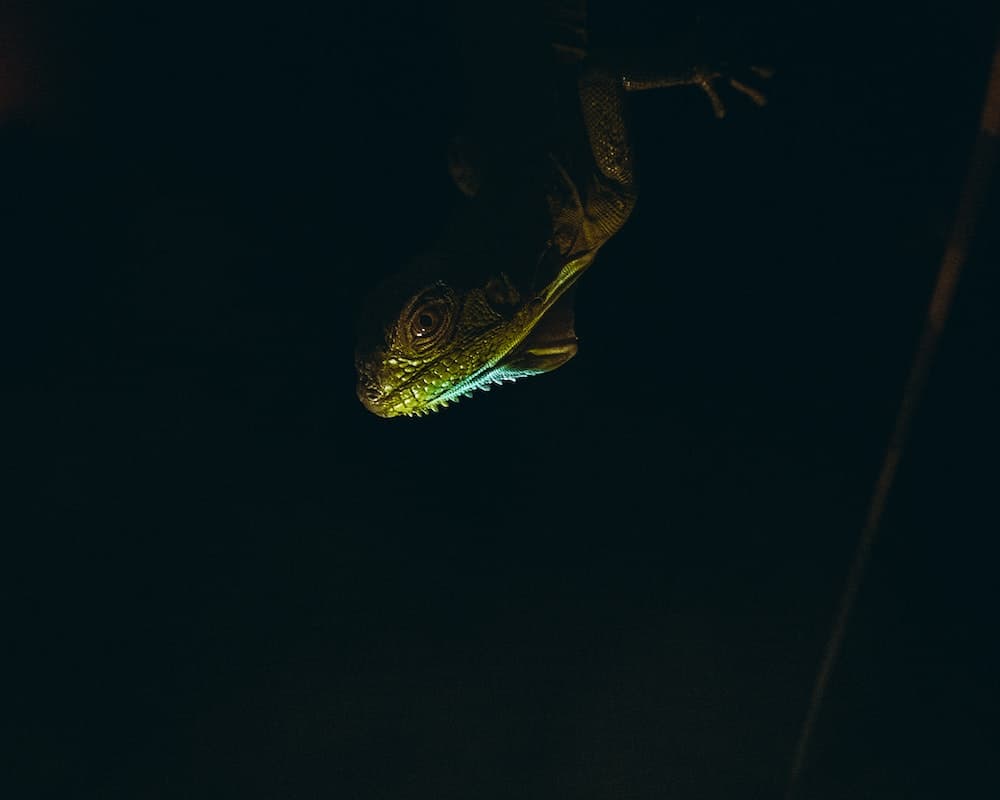Are you wondering if your bearded dragon feels cold at night? Is there something you can do to ensure it has a comfortable night’s sleep without feeling cold? Let us dive right into it and find answers to your questions.
Generally, it is recommended to keep your bearded dragon warm with the natural surroundings as much as possible. However, in extremely cold climates, using artificial heating systems such as a heating mat or ceramic heat emitter methods becomes necessary.
We have compiled a list of ways on how you can keep your pet cozy at night.
Understanding Bearded Dragons And Their Natural Habitat
Bearded dragons (Pogona vitticeps) are well-liked and enthralling reptile pets renowned for their calm disposition and distinctive appearance.
Because they are cold-blooded and rely on outside factors to regulate their internal temperature, pet owners must make an environment that is adequate for these demands, particularly at night when temperatures can drop dramatically.
Understanding the bearded dragon’s naturally preferred environment is crucial before exploring nocturnal heating options.
These reptiles are indigenous to Australia’s semi-arid and arid regions, where they bask in the sun all day to absorb heat and keep their internal temperatures at their ideal levels. Bearded dragons seek refuge in tunnels or rocky nooks at night because temperatures can drop significantly.
Natural Ways To Keep Your Bearded Dragon Warm At Night
Here are some ways you can adopt to ensure that your pet is comfortable in its enclosure and is not feeling too cold at night. These are basic requirements to keep your pet healthy and protected.
- Proper Terrarium Setup
A well-designed terrarium is the first step in keeping bearded dragons warm at night. The enclosure needs to be big enough to fit different temperature zones.
The enclosure should have a colder area on one end and a basking area with a heat light on the other.
To maintain the health, happiness, and well-being of your pet, a suitable terrarium must be set up. A well-thought-out cage will closely resemble their natural habitat, provide them enough room to move around and explore, and provide the right temperature and lighting for their particular requirements.
- Basking Spot
Because bearded dragons need high temperatures to effectively digest food and maintain their general health, the basking area is essential.
Provide a basking lamp that emits UVA and UVB radiation during the day to aid in the production of vitamin D3, promote calcium absorption, and avoid metabolic bone disease. The temperature in the basking area should range from 35°C to 95°F.
Top 5 Methods To Keep Your Bearded Dragon Warm At Night With Heat Lamps
Because bearded dragons depend on outside heat sources to regulate their internal temperature, keeping them warm at night is essential for their health. An efficient and well-liked way to supply the required warmth at night is with lamps.
Here are some strategies for using lamps to keep your bearded dragon comfortable at night:
- Use A Ceramic Heat Emitter (CHE)
A special type of lamp called a ceramic heat source produces infrared heat without producing any visible light. As a result, it’s perfect for use at night when your pet is asleep.
CHEs come in different wattages, so choose one that fits your terrarium size and your pet’s temperature needs. Place the CHE on the cooler end of the insulated container to maintain the overnight temperature at about 70-75°F (21-24°C).
- Utilize A Dimmer Switch
A practical and efficient way to control the level of heat and light delivered at night for your pet is to use a dimmer switch with the lamp.
You may manage the lamp’s output with a dimmer switch, giving you more control over the temperature at night in the enclosure.
- Install A Low-Wattage Incandescent Bulb
Another alternative for producing heat at night is to use a low-wattage incandescent bulb that generates little light, especially a red or blue one. Although less effective than CHEs, these bulbs can nevertheless offer some nighttime warmth.
Make sure the power is low enough, though, to prevent overheating the enclosure.
- Use A Timer
Purchasing a timer for the lamp can help you keep a regular day-night cycle. When your pet is basking during the day under the usual heat and UVB lamps, set the timer to switch off the lamp. The heat light can then be set to turn on in the evening to keep your pet warm all night.
You can set the lamp’s timer to come on in the evening and go off in the morning and use the dimmer switch to regulate the brightness of the heat light at night.
- Supplement With A Heat Mat
If your room’s ambient temperature drops drastically at night, using a heat mat to keep your pet warm can be a proper additional heating technique.
Under-tank heaters (UTHs), commonly referred to as heat mats, offer a consistent and mild supply of warmth from the enclosure’s bottom.
Other Things To Keep In Mind
Bearded dragons are diurnal, so it is important to keep them comfortable and warm at night, here are a few more things you can do to ensure that:
Monitor The Temperature Regularly
Use digital thermometers positioned at the colder end and the basking area to check the temperature inside the enclosure on a regular basis.
This makes it possible to check if the lamp is supplying the required warmth without making the enclosure overly hot or cold.
Ensure There Is Proper Ventilation
Heat lamps are necessary to keep your bearded dragon warm at night, but the enclosure must also have adequate ventilation.
Proper ventilation ensures that your pet is getting a good air supply as well as staying comfortably warm at night.
A healthy airflow keeps excessive humidity from building up and protects your pet’s respiratory system.
Keep In Mind Your Pet’s Age And The Season
More UVB exposure and basking time are crucial for supporting the growth and development of young bearded dragons (hatchlings and juveniles). You can gradually cut back on UVB exposure and basking time as they get older.
Additionally, you also need to change the lighting schedule throughout the winter when natural daylight hours are lower.
Use A Thermostat For Heat Map
It is essential to pair the heat mat with a thermostat in order to prevent overheating. A thermostat controls the heat mat’s output temperature to prevent overheating and maintain a level that is safe and comfortable for your pet.
You can set the desired nighttime temperature using a thermostat and have faith that it will be maintained regularly.
Should I Adjust The Heat Lamp During Different Seasons?
Ectothermic creatures like bearded dragons depend on outside heat sources to maintain body temperature. As a responsible pet owner, you should modify the lamp arrangement to guarantee your pet’s comfort and health all year long.
Here’s a rough idea of how you can adjust the lamp in different seasons throughout the year:
Fall Or Spring
It may be simpler to maintain the proper temperature in the enclosure during the transitional seasons of spring and autumn when ambient temperatures are mild.
Most bearded dragons may be kept in a regular lamp with a basking spot temperature of 95 to 105 degrees Fahrenheit (35 to 40 degrees Celsius) during the day.
Make sure the enclosure stays between the 75-85°F (24-29°C) acceptable temperature range. Use a ceramic heat emitter or a low-wattage incandescent bulb to provide soft nocturnal warmth (70-75°F or 21-24°C) if the temperature drops drastically throughout the night.
Summer
You may be required to modify the lamp configuration in the summer to avoid overheating because of the higher ambient temperatures.
Be sure to keep the cage out of the direct sun and any other heat sources that can cause the temperature to rise too high.
To maintain a reasonable temperature range, you have to reduce the wattage of the basking lamp or raise the bulb just a little bit higher above the basking place.
Winter
You’ll need to supply more heating throughout the colder winter months to make up for the lower outside temperatures.
To keep the basking spot within the advised range (95-105°F or 35-40°C), increase the wattage of the basking lamp slightly. Continue using a low-wattage incandescent lamp or ceramic heat emitter at night to keep your pet warm (70-75°F or 21-24°C).
Consider employing a thermostat to control the heat source and prevent temperature changes if the room temperature lowers noticeably at night.
Conclusion
Your bearded dragon’s health and well-being depend on you providing sufficient evening heating. A happy and contented pet will benefit from an appropriate setting that replicates its natural habitat, including a basking area during the day and a mild heat source at night.
In order to give your bearded dragon a stable and comfortable atmosphere, you should always keep an eye on the temperatures, utilize dependable heating equipment, and prevent rapid changes in the environment.




